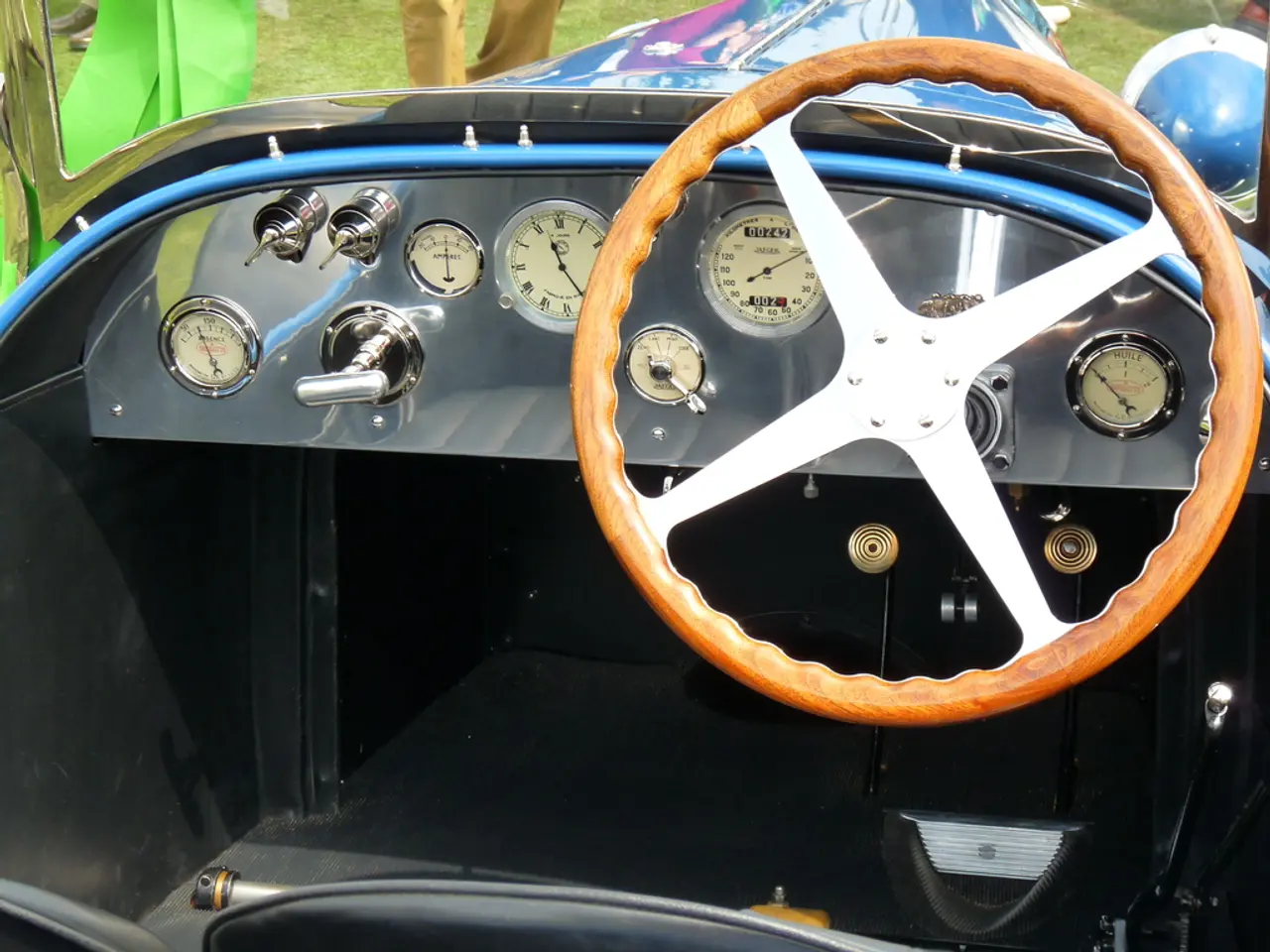Distance Measuring Equipment (DME) refers to technological devices that determine and display the distance between two points, often used in aviation for navigation purposes.
In the world of aviation, one essential tool that ensures safe and precise navigation is the Distance Measuring Equipment (DME). This device, often found on navigation maps and charts, is represented by a square symbol [1].
The DME device works by measuring the time-lapse of a signal transmitted by the aircraft to a ground station and the response sent back [1]. This time difference is used to calculate the "slant range" distance from the aircraft to the station, providing no direction (azimuth) information, only distance [2].
Pilots can read this distance in nautical miles (nm) on the display in the cockpit [1]. It's worth noting that DME operates in the UHF band, with a frequency range of 962 - 1213 Mhz [2].
When it comes to navigation, DME plays a distinct but complementary role when combined with other systems. With VOR (Very High Frequency Omnidirectional Range), high-power DME stations (transmitting about 1000 watts) are often collocated with VOR stations. This pairing allows the aircraft to simultaneously receive azimuth information from the VOR and distance information from the DME, enabling precise location fixing along airways during en-route navigation [2].
In terms of ILS (Instrument Landing System), low-power DME units (about 100 watts) are typically integrated with ILS systems to provide distance information for terminal and approach navigation, helping pilots know their distance from the runway threshold while following the ILS glide path [2].
Modern aircraft and avionics can tune multiple DME frequencies, and with scanning capabilities, they can use distances from multiple DMEs (DME/DME navigation) to support Area Navigation (RNAV) routes for en-route or terminal operations, serving as a GPS backup or supplement [1][3].
Unlike NDB and VOR, DMEs are both transmitters and receivers, with a transponder antenna on both the aircraft and the ground station [1]. However, it's important to note that the DME device, as defined by EUROCONTROL, is a combination of ground and airborne equipment [1].
In summary, DME operates within 960-1215 MHz by timing signal pulses for distance measurement and is strategically combined with VOR for en-route azimuth and distance positioning and with ILS for distance guidance during instrument approaches [2][1][3]. This versatile tool plays a crucial role in ensuring safe and efficient navigation in aviation.
References: 1. Air Navigation Services - EUROCONTROL 2. Distance Measuring Equipment (DME) - Aviation Safety 3. Distance Measuring Equipment (DME) - Federal Aviation Administration
- The DME device, operating within the UHF band with a frequency range of 962 - 1213 Mhz, works by measuring the time-lapse of a signal transmitted by the aircraft to a ground station and the response sent back, thereby providing pilots with distance information in nautical miles on the display in the cockpit.
- In aviation, DME plays a crucial role in ensuring safe and precise navigation, often combined with other systems like VOR for en-route azimuth and distance positioning and with ILS for distance guidance during instrument approaches, serving as a backup or supplement to modern GPS systems.




